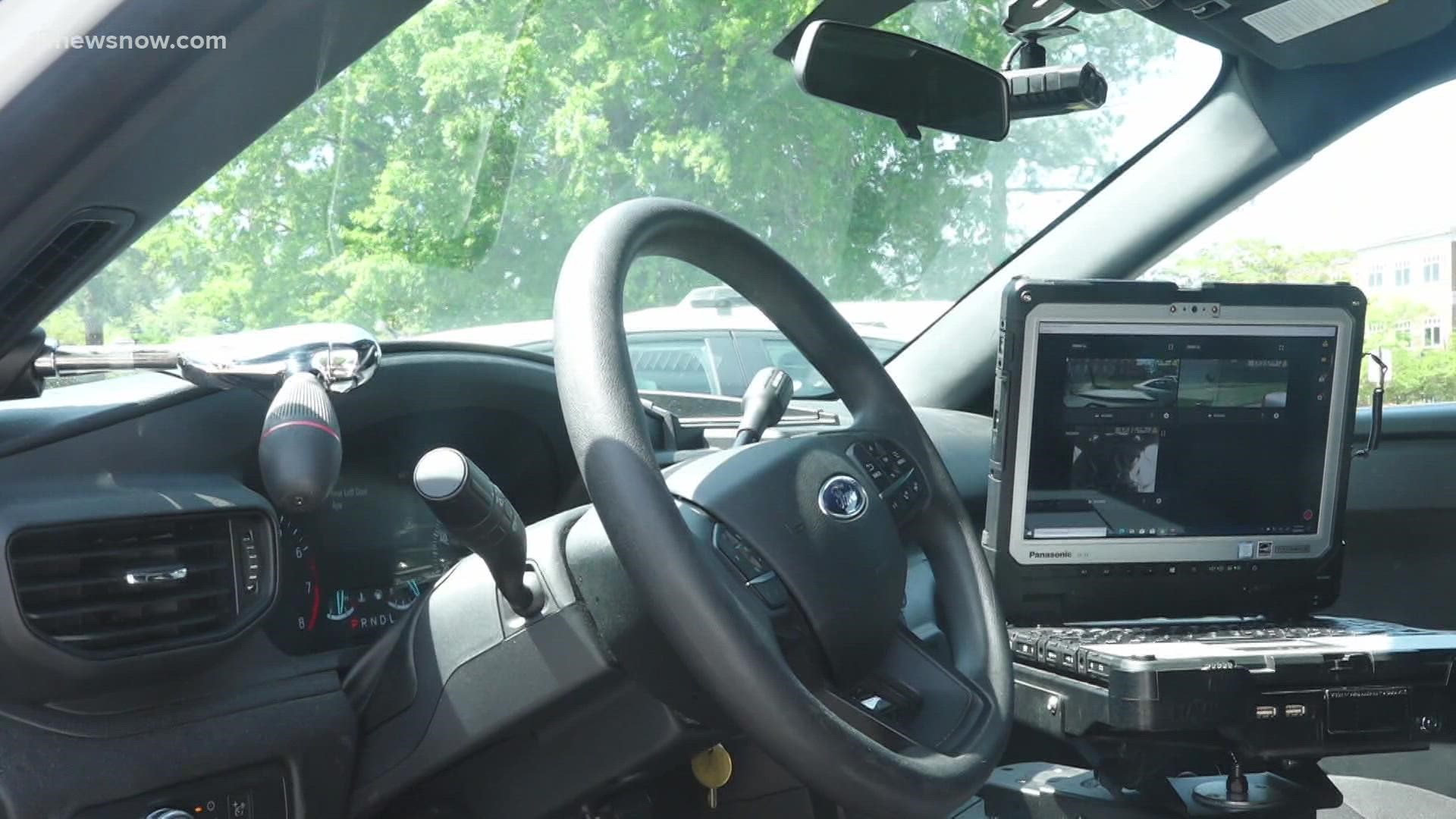VIRGINIA BEACH, Va. — Author's note: The video above is from a separate story on when the Virginia Beach Police Department changed their body camera policy that aired on May 4, 2021.
As a part of their long-term plan to increase transparency with the public on their interactions, the Virginia Beach Police Department announced that they have installed new, improved video recorders in 215 of their cars.
"I am proud to announce the addition of MVRs to our technology platform, where they will assist our officers in capturing video of traffic and criminal law violations," Virginia Beach Police Chief Paul Neudigate said in a statement. "Which will enhance prosecution efforts, while also providing a more objective assessment of encounters between our officers and citizens that may find themselves the subject of a traffic stop."
MVR stands for Mobile Video Recorders. While many officers already had patrol cameras, these new devices will provide more angles to capture activity.
An additional angle that will allow more of the story to be documented by police officers to share with the community if necessary will be recording the rear seat of the patrol car. This will happen when people are taken into custody and transported.
Virginia Beach Police Captain Billy Zelms said the cars have a front recording camera and another aimed at the backseat.
“The second is a prisoner seat camera that allows us to view what is going on at any given time,” Captain Zelms said.
Captain Zelms is a part of the department’s technology and special operations bureau.
He said the new car cameras activate instantly when a police officer turns on their car lights, opens the backdoor, or draws their taser. All those signals, also trigger the body-worn cameras.
“It activates the officers body cameras and any officer who are in a 30 to 60 foot radius of that officer.”
Zelms said the cameras assist officers on the job.
“So we don’t miss the opportunity to record a valuable incident or something we need to see,” Zelms said. “And it allows the officers to concentrate more on the task at hand and what is in front of them.”
He also said this will help strengthen their relationships with the public.
“That commitment to transparency, that commitment to accountability. And to increase our technological capabilities,” Zelms said.
Other measures that VBPD has taken in the last 18 months include requirements for sworn officers to have a body-worn camera during both active patrols and off-duty police-related events, a pre-activation time before a patrol encounter that increased to two minutes versus 30 seconds and activation of the camera immediately when dispatched to a scene.
Many of these changes have happened in the aftermath of a violent night at the Oceanfront on March 26, 2021, when VBPD officer Solomon Simmons shot and killed 25-year-old Donovon Lynch. Simmons' body camera was not recording.

